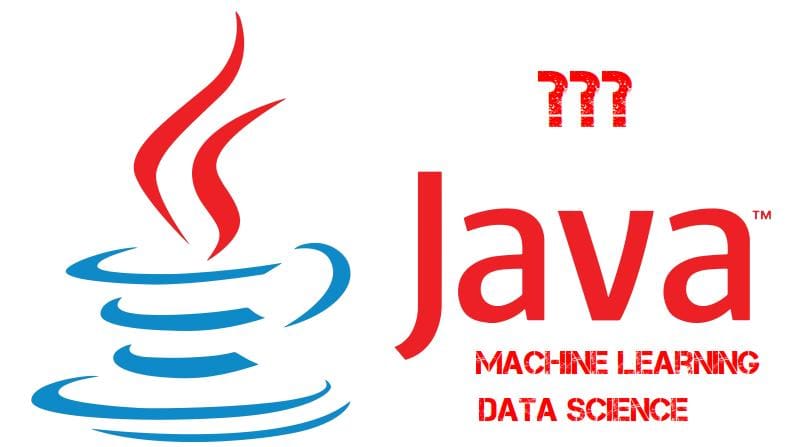 Can Java Be Used for Machine Learning and Data Science?
Can Java Be Used for Machine Learning and Data Science?
While Python and R have become favorites for building these programs, many organizations are turning to Java application development to meet their needs. Read on to see how, and why.
By Malcom Ridgers, BairesDev

Machine learning, data science, and artificial intelligence have been some of the most talked-about technologies in recent years, and rightfully so. These advancements in the world of tech have taken automation and business processes to the next level. Organizations of all sizes are investing millions of dollars into research and people to build these incredibly powerful data-driven applications.
There are many different programming languages that are applicable for use to develop machine learning and data science applications. While Python and R have become favorites for building these programs, many organizations are turning to Java application development to meet their needs. From enterprise-level business solutions and navigation systems to mobile phones and applications, Java is applicable to nearly every area of technology.
In the early ’90s, a Canadian computer scientist named James Gosling and his team created Java while employed by Sun Microsystems (owned by Oracle). Over 20 years later, Java is still among the top-ranked and most lucrative programming languages used today.
Why Choose Java for Data Science and Machine Learning?
Java is the invisible force behind many of the devices and applications used on a daily basis and power everyday lives. Not only is it possible to use Java for machine learning and data science application development, but it is also the preferred option by many developers for a number of reasons, including:
- Java is one of the oldest languages used for enterprise development. Typically, in the world of development and technology in general, old means outdated. However, this is not the case. Java’s age means that many companies are probably already working with a significant amount of the programming language without even knowing it. Infrastructure, software, applications, and many other working parts of the company’s tech may already be built upon Java, which can help simplify integration and minimize compatibility issues.
- Data science goes hand-in-hand with Big Data. Most of the popular frameworks and tools used for Big Data are typically written in Java. This includes Fink, Hadoop, Hive, and Spark.
- Java is usable in a number of processes in the field of data science and throughout data analysis, including cleaning data, data import and export, statistical analysis, deep learning, Natural Language Processing (NLP), and data visualization.
- Developers consider the Java Virtual Machine as one of the best platforms for machine learning and data science, as it enables the developer to write code that is identical across multiple platforms. It also allows them to create custom tools at a faster pace and features a load of IDEs that help to improve overall productivity levels.
- The release of Java 8 introduced Lambdas. Lambda Expressions give developers the power to manage the enormous capabilities of the Java language. This simplifies the development of large data science or enterprise projects significantly for developers.
- As a strongly typed programming language, Java ensures that programmers are explicit and specific about the variables and types of data that they deal with. Sometimes confused with static typing, strong typing makes it easier to manage large data applications while also simplifying codebase maintenance. It also helps developers avoid the need to write unit tests.
- Scalability is an important aspect of a programming language that developers must consider before beginning a project. Java makes application scaling an easier process for data scientists and programmers alike. This makes it a great choice for the building of larger or more complex Artificial Intelligence and Machine Learning applications, especially when they are being built from scratch.
- Many of the other widely used programming languages of today for Data Science and Machine learning are not the fastest options. Java is perfectly suited for these speed-critical projects as it is fast executing. Many of the most popular websites and social applications of today rely on Java for their data engineering needs, including LinkedIn, Facebook, and Twitter.
- Production codebases are commonly written in Java. Knowing Java helps developers figure out how data is being generated, submit merge requests to production codebases, and deploy Machine Learning solutions to production.
- Java has many libraries and tools available for Data Science and Machine Learning. For example, Weka 3 is a fully Java-based workbench popularly used for algorithms in machine learning, data mining, data analysis, and predictive modeling. Massive Online Analysis is an open-source software used specifically for data mining on data streams in real-time.
Java is an incredibly useful, speedy, and reliable programming language that helps development teams build a multitude of projects. From data mining and data analysis to the building of Machine Learning applications, Java is more than applicable to the field of data science. It’s one of the most preferred languages for these tasks and has plenty of reasons why. If you’re about to tackle a machine learning project, consider using it. You’ll be surprised how much you can get out of it.
Bio: Malcom Ridgers is a tech expert specializing in the software outsourcing industry. He has access to the latest market news and has a keen eye for innovation and what's next for technology businesses.
Related:
- How Kubeflow Can Add AI to Your Kubernetes Deployments
- Two Years In The Life of AI, Machine Learning, Deep Learning and Java
- Why Python is One of the Most Preferred Languages for Data Science?

 Can Java Be Used for Machine Learning and Data Science?
Can Java Be Used for Machine Learning and Data Science?